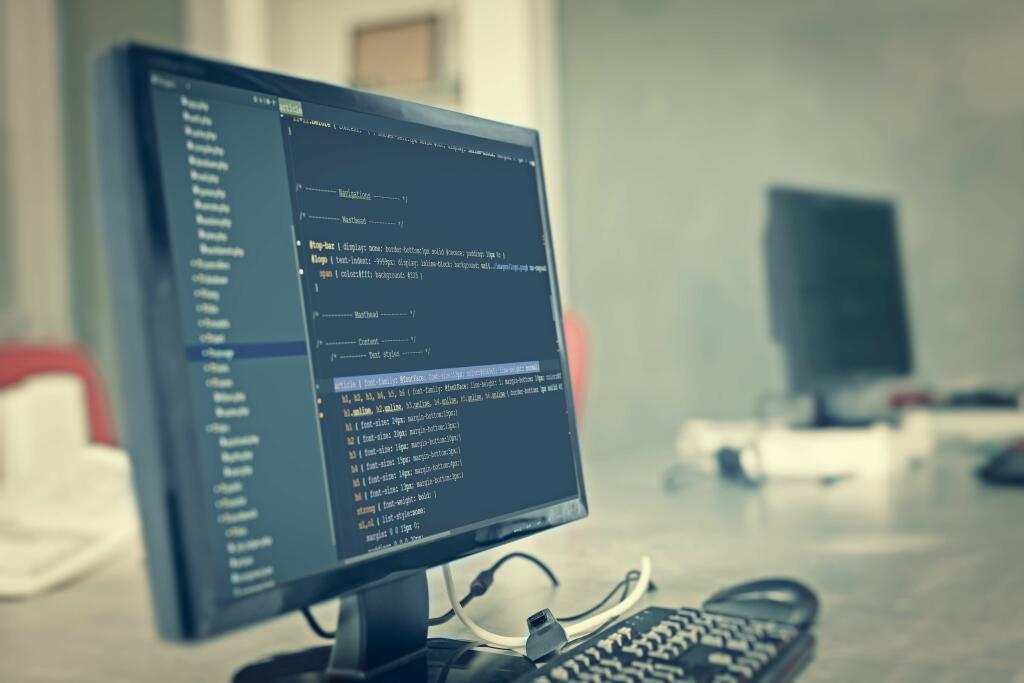The system growth life cycle (SDLC) is an iterative, structured, and multistep process that is utilized by groups to create high-quality information methods. It involves the activities of planning, evaluation, designing, constructing, testing, deploying, and maintaining a system that meets or exceeds client expectations. Generally talking, a safe SDLC entails integrating security testing and other actions into an present growth process. Examples embody writing safety requirements alongside practical requirements and performing an structure threat evaluation through the design phase of the SDLC.

It may also be used to develop hardware or a combination of each software and hardware on the identical time. Again, since SDLCs make the most of intensive paperwork and guideline documents, it’s a group effort and dropping one even a significant member will not jeopardize the project timeline. But in concept, it illuminates the shortcomings of the principle waterfall model by stopping larger bugs from spiraling out of control.
Additional: Software Maintenance
Projects pass through 4 main phases many times in a metaphorically spiral movement. This can include dealing with residual bugs that were not in a position to be patched before launch or resolving new points that crop up due to person reports. Larger techniques may require longer maintenance phases compared to smaller systems. Developers must now transfer into upkeep mode and start training any activities required to handle issues reported by end-users.

As the SDLC is a repetitive methodology, you have to ensure code high quality at each cycle. Many organizations tend to spend few efforts on testing whereas a stronger give attention to testing can save them plenty of rework, time, and cash. The better, sooner, and cheaper method is to combine security testing throughout every stage of the SDLC, to assist uncover and scale back vulnerabilities early and build safety in as you code.
What’s A System Growth Life Cycle Security Testing Provider?
During the testing stage, developers will go over their software with a fine-tooth comb, noting any bugs or defects that must be tracked, fixed, and later retested. This transfer is considered advanced and uncertain but the risk is minimized considerably because the cutover typically takes place during off-peak hours. Both end-users and system analysts should see a refined project with all essential changes applied at this time.

Popular SDLC models embody the waterfall model, spiral model, and Agile model. System development life cycles are sometimes used when creating IT initiatives. Each stage has a separate project plan and takes information from the previous stage to avoid similar issues (if encountered). However, it’s weak to early delays and may lead to massive issues arising for development teams later down the road.
The methods development life cycle initially consisted of 5 levels as a substitute of seven. These included planning, creating, growing, testing, and deploying. This contains all the specifications for software program, hardware, and community requirements for the system they plan to construct. This will prevent them from overdrawing funding or sources when working at the identical place as different improvement groups.
Phases Of The System Improvement Life Cycle Information
It consists of steps as follows- Plan, Analyze, Design, Develop, Implement and Maintain. Want to improve utility high quality and monitor utility performance at every stage of the SDLC? Try out Stackify’s Retrace software https://www.globalcloudteam.com/ for free and experience the method it may help your organization at producing higher-quality software.
It also helps point out how those needs may be met, who will be answerable for sure components of the project, and the timeline that must be anticipated. SDLC has been round because the 1960s—a time when teams had been extra centralized. As the knowledge know-how sphere continues to evolve, the SDLC has been changed to keep up with the ever-changing demands in system growth. Fundamentally, SDLC trades flexibility for management by imposing construction. It is more generally used for big scale projects with many builders.
In the first section, the staff determines whether or not there’s a necessity for a new system to reach the strategic goals of a enterprise. This is a feasibility research or preliminary plan for the corporate to acquire any sources necessary to enhance a service or construct on specific infrastructure. Another key reason why teams need to leverage an SDLC is, it’s important that they plan forward of time and examine the structured objectives and phases of a selected project. Iteration permits faster improvement of systems by moving ahead with improvement without requiring full specifications upfront. Additional specifications can be launched as the event course of is repeated, producing new versions of the system at the end of every iteration. Design paperwork typically embody practical hierarchy diagrams, display screen layouts, business guidelines, course of diagrams, pseudo-code, and an entire knowledge model with a data dictionary.
The agile mannequin is comparatively well-known, particularly within the software program improvement trade. The data system will be integrated into its setting and ultimately installed. After passing this stage, the software program is theoretically prepared for market and may be supplied to any end-users. Programming languages can embrace staples similar to C++, PHP, and more. Developers will select the proper programming code to use based on the project specifications and necessities. Once full, improvement managers will prepare a design doc to be referenced throughout the next phases of the SDLC.
As a number one supplier of utility security testing solutions, Veracode makes it simple for builders and security teams to combine safety throughout the SDLC. This makes it possible for builders to search out and fix flaws on the most cost-efficient level within the growth process and deliver safer software program, sooner. This stage includes the development of detailed designs that brings initial design work right into a completed form of specs. This work includes the specification of interfaces between the system and its intended setting, and a comprehensive analysis of the systems logistical, upkeep and support requirements. The detail design and improvement is liable for producing the product, course of and material specifications and will end in substantial changes to the event specification. System Design is an important stage in the SDLC as it bridges the hole between necessities evaluation and system development.
The second SDLC section is the place groups will work on the root of their drawback or want for a change. In case there’s an issue to resolve, possible solutions are submitted and analyzed to determine one of the best fit for the project’s ultimate goal or objectives. It’s where groups contemplate the practical requirements of the answer.
The V-model (which is brief for verification and validation) is kind of much like the waterfall model. A testing part is included into each growth stage to catch potential bugs and defects. One of the upsides to this model is that builders can create a working model of the project relatively early of their improvement life cycle, so implementing the modifications is often less expensive. Before we even begin with the starting stage, one of the best tip we may give you is to take time and acquire a proper understanding of app improvement life cycle. After training, methods engineers and developers transition the system to its manufacturing setting. During this step, present priorities that may be affected and how they should be handled are thought of.
During the Analysis stage, the major focus is on gathering and understanding the necessities of the system. This consists of conducting interviews, learning existing processes, and figuring out stakeholders’ needs. The gathered information serves as a basis for designing a system that meets users’ expectations and addresses organizational challenges.
- Security is important – particularly when the aim of the system growth life cycle is to create software program.
- This is probably the most crucial step as a outcome of it units the tone for the project’s general success.
- At this stage, the aim is to deploy the software to the production environment so customers can begin utilizing the product.
- However, exams are sometimes postponed till later stages, particularly if they are not nicely integrated and create friction.
- Project and program managers sometimes take part in SDLC, along with system and software engineers, growth groups and end-users.
Thorough research is required earlier than shifting ahead to the following stage. A system improvement life cycle safety testing supplier offers solutions that facilitate safety checks throughout the event life cycle – both in development and in production. System assessments are performed so as to right deficiencies and adapt the system for continued enchancment. Object-oriented evaluation and design (OOAD) is the process of analyzing an issue area to develop a conceptual model that may then be used to guide development.
It includes designing the system’s architecture, database construction, and consumer interface, and defining system parts. The Design stage lays the foundation for the subsequent improvement and implementation phases. DevSecOps, an extension of DevOps, is a methodology that emphasizes the mixing of security assessments throughout the complete SDLC.
Conduct with a preliminary analysis, think about alternative options, estimate costs and benefits, and submit a preliminary plan with recommendations. In brief, we need to confirm if the code meets the defined necessities. For instance, define a nomenclature for information or outline a variable naming fashion corresponding list and describe the six phases of the security systems development life cycle. to camelCase. This will assist your team to supply organized and consistent code that is easier to grasp but in addition to check in the course of the next section. ” This stage of the SDLC means getting enter from all stakeholders, including prospects, salespeople, business specialists, and programmers.

Comentarios recientes